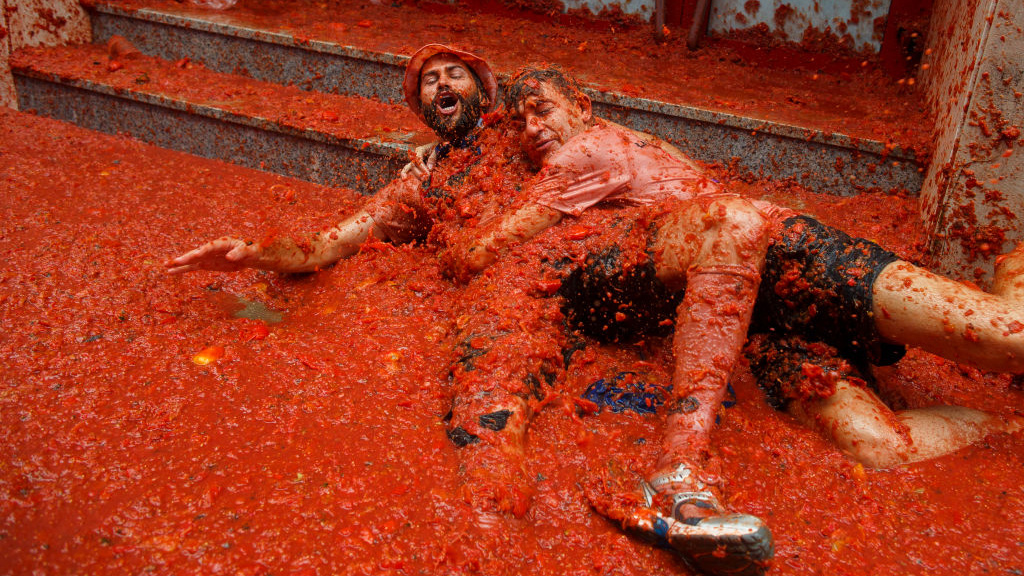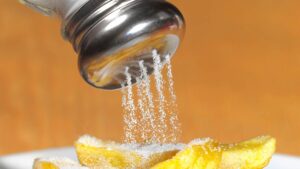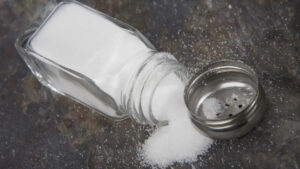Australia’s potash ready to go ‘straight onto your tomatoes’ with first project ready to launch

Australian-made SoP is just about ready to go on your tomatoes. Picture: Getty
After years in development, Salt Lake Potash (ASX: SO4) is set to be the first to market in Australia’s burgeoning sulphate of potash industry.
First SoP production at Salt Lake’s $269 million Lake Way project near Wiluna is expected to be announced this week, with plans to ship its product to more than 60 markets around the world.
The next cab off the rank, Kalium Lakes (ASX: KLL), is not far behind, with the Beyondie project in the Pilbara on track for September.
The potash sector straddles the worlds of mining and agriculture.
Australian producers will pump potassium rich brines from salt lakes in the remote Outback – mainly in northern WA – and collect the harvested salts to create a clean, high-grade SoP product.
This natural product is an essential fertiliser input for farming nutrient-rich fruit and vegetable crops, which are becoming more accessible across the world as the global middle class grows.
Australian companies have been extremely successful so far in finding offtake partners for global and domestic sales.
“We produce too much for the Australian market – the Australian market is about 80,000-100,000tpa of SoP,” Salt Lake CEO Tony Swiericzuk said.
“We’re producing 245,000tpa, so we set out with an intent to geographically diversify as much as we could, one to manage seasonality demands and secondly to manage unexpected weather events.
“92 per cent or 224,000 tonnes of that is going offshore through six global offtakes and that’s going to 60 countries, with early demand orders now in already for Russia, Mexico, Belgium and Peru.
“We’ve also kept 21,000t for opportunistic placements and more importantly for the domestic market.”
Premium product
SoP from Lake Way could soon “go straight onto your tomatoes”, according to Swiericzuk.
It will ramp up to full scale production with the addition of three new pond trains over the course of the next 12 months, with Salt Lake also holding rights across nine salt lakes in the remote northern Goldfields for future expansion opportunities.
While prices for MoP and SoP softened a few years ago, Swiericzuk said rising food commodity prices were underpinning strong demand for fertilisers.
That meant better conditions over the past few months for SoP prices, which are benchmarked on a number of indexes depending on which part of the world it is being traded.
“(The north west Europe) index is sitting around that $US540/t mark and that’s for a 50 per cent standard product,” he told Stockhead.
“All the Australian producers will make a premium 52-53% K2O product and very low chlorides in the product and high solubility, that all attracts premiums over the published index.”
Salt Lake Potash share price today:
Domestic market the focus for Kalium
Kalium Lakes, meanwhile, announced last week it had completed lining its 42 ponds at Beyondie, near Newman in the Pilbara.
Beyondie will produce about 90,000tpa when it opens in September, but recently stated it could ratchet its capacity up to 100,000tpa by debottlenecking its plant, and 120,000tpa beyond that with low capex investments.
Kalium has a $650 million, 10-year deal with K-Plus-S, one of the world’s largest SoP producers, to supply SoP that will be delivered closer to home.
Historically, Australia has imported all of its SoP, something that will soon change.
“K-Plus-S holds different parts of the SoP market globally and most of their product comes out of Germany and North America and the cost of shipping for them into Australasia is quite high,” Kalium CEO Rudolph Van Niekerk said.
“Their strategy is to take the product that comes out of Beyondie and place it into Australia and Asia-Pacific in particular, where they currently have over 100,000t of sales.
“They also have about 65% of the Australian market, so their strategy would be to progressively withdraw their own supply into this market and make sure product goes first into Australia, New Zealand and the rest of Asia-Pacific.”
Cost curve an advantage for local producers
While global in scale, the SoP market is considerably smaller than its cheaper cousin Muriate of Potash, produced by mega-corporations in North America and Eastern Europe.
Overseas SoP is commonly derived from MoP via the energy-intensive Mannheim chemical conversion process.
Not only is this less clean than using solar evaporation, but Mannheim producers eat additional costs from having to purchase and transport the MoP as well as the chemicals to process it.
Morgans research analyst Mathew Collings, who covers Kalium Lakes, says Australian producers are likely to be on the lower end of the global cost curve for this reason.
“The key for these guys being brine evaporation-based producers rather than the big industrial MoP miners and refiners is their cost profile compared to those energy intensive processors,” he said.
“If all goes well and they start producing as planned, these guys all sit in the bottom half, depending on which company and what you assume the bottom quarter of your cost curve.
“Which makes them a pretty robust project through any pricing cycles you see going forward.
“That’s the key driver for this style of project because they are low cost and carry a low ESG risk in a sense as opposed to the pretty heavy and dirty roasting of MoP that also makes SoP.”
Are potash companies undervalued?
At Morgans, Collings has a 29c price target on KLL, which last traded at 22c.
Among the major investment banks Macquarie is especially bullish on potash.
Macquarie reduced its price target on SO4 from 80c to 65c in a note last month after Salt Lake announced a $28 million institutional placement to enable the final drawdown on its $138 million debt facility, and a small rise in costs and capex for Lake Way.
But Macquarie still has an outperform rating on the stock, with a 65c target representing 73 per cent upside on SO4’s last traded price of 37.5c.
Collings said given how new the industry was, many investors were adopting a wait and see approach.
“People are not as specifically worried about SoP, MoP, what is the market doing as much as ‘why is this the one if I want to play this thematic’ and then a bit more of the high level, ‘why is SoP something to consider?’” he told Stockhead.
“I think there are not a lot of big investors that are willing to take on development risk in projects nowadays, it’s a bit of a gap in the market.
“With Kalium and SO4 at $100-200 million, their market cap’s not big enough for some of the larger investors anyway and a lot of the large investors will say they’re not in the business of taking on project development execution risk.
“They’re happy to come in later even if the price has gone up on projects like this.”
Kalium’s Van Niekerk said it was natural for investors to be cautious given the infancy of the Australian sector.
“Producing SoP from a brine resource is new, producing large scale SoP from an evaporation process is new and the processing plant itself is something that hasn’t been built in Australia before,” he said.
“I think to a large extent ourselves and SO4 getting off the ground and into production will put some confidence in the market.
“It will bring those skills into Australia and that will probably help other producers in terms of that investor market as well.”
Kalium Lakes share price today:
Who is next in line?
It is clear SO4 and Kalium have nailed down spots one and two in the race to be Australia’s first SoP producers, but who else could join them down the line?
$100 million-capped Agrimin (ASX: AMN) has the largest project in the pipeline in its Mackay SoP project on the WA-NT border.
It recently signed a binding 10-year 150,000tpa offtake agreement with a subsidiary of China’s biggest potash importer, Sinofert Holdings.
Mackay would produce 450,000tpa for 40 years at costs of $US159/t, reputed to be the lowest in the world.
Mark Creasy-backed Australian Potash (ASX: APC) is progressing toward a final investment decision after raising $10 million last month for its Lake Wells project near Laverton.
The project has the backing of the Australian Government through the Northern Australia Infrastructure Facility and is impressing market influencer Creasy, who paid $857,000 in April to bump his stake up to 7.8 per cent before joining in the May placement.
BCI Minerals’ (ASX: BCI) Mardie Salt project is another backed by NAIF – to the tune of a $450 million. The $913 million development would be the largest salt project and third largest solar evaporation development in the world, producing 5.35Mtpa of salt and 140,000tpa of SoP a year.
Reward Minerals (ASX: RWD) has environmental approval from State and Federal Governments for its Lake Disappointment project, where a review of a 2018 PFS is due this year, while explorer Trigg Mining (ASX: TMG) is further back having just declared a maiden inferred resource for its Lake Throssell deposit in May.
Related Topics
UNLOCK INSIGHTS
Discover the untold stories of emerging ASX stocks.
Daily news and expert analysis, it's free to subscribe.
By proceeding, you confirm you understand that we handle personal information in accordance with our Privacy Policy.








